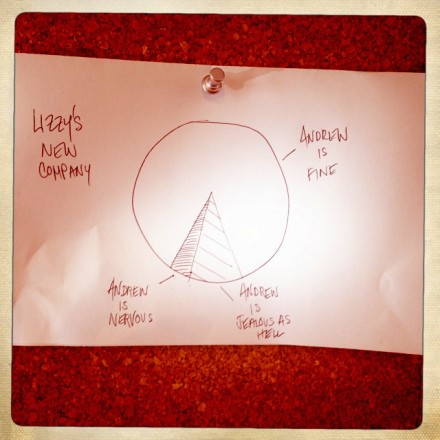Leaning in
I just finished reading Sheryl Sandberg’s book Lean In and, along with eight thousand other bloggers and journalists, I’m going to put in my two cents.
Required Reading
This book is going to be the seminal book of our generation — the way The Feminine Mystique was for the last generation. It articulates the internal and external barriers facing those of us who have chosen to have both careers and children. It exposes massive sexism in our society’s cultural views, workplaces and homes. It’s a book that women can commiserate with and men can learn from.
Sound like nothing new? A couple things set this one apart:
- In a world where there’s very little vetting of “experts,” this book was written by someone whose credentials and experience cannot be denied. Sandberg was a long-time Google executive and is now COO of Facebook. She has kids (and actually gets home in time to have dinner with them) and a marriage that’s an equal partnership. Unfortunately, it takes a woman with this kind of cred to get people to listen. Fortunately, Sandberg delivers.
- Clearly the PR investment behind this book was monumental. A month before it was even released, I heard about it on NPR, read Sandberg’s Time magazine article, and couldn’t visit a news site, blog, or social network without seeing the buzz. With more than 300,000 books published each year in the U.S., it takes a really strategic (and well funded) publicity campaign to get this kind of coverage. This tells me that Sandberg is serious about using this book to create real change. With the book hitting #1 on the New York Times Best-Seller List (and staying there) just a week after it hit the shelves, she has at least succeeded in getting our attention.
Unfounded Criticism
Lean In has received as much criticism as praise. Some have said that Sandberg is putting more unnecessary pressure on women who are already overwhelmed with work and family. Others assert that with two degrees from Harvard, hired help and a whole lot of choice, she has a myopic point of view. Let’s put this to rest by reminding ourselves that this book was written for professional women who have chosen to have both a career and family — and to some degree for those in that position without it being so much of a choice. Thus, these criticisms are akin to blasting a parenting book because it’s not useful to people who don’t have children. Lean In was written for me — and for so many of my friends, clients, and colleagues — and we find it helpful, not hindering.
What Resonated with Me
I really identify with Sandberg’s Janusian feelings of fear and drive. Starting and running a creative agency in New York City is not for the faint of heart. But that doesn’t mean I have no fear. I am well aware of my insecurities and struggle daily with how they hold me back or interfere. Sandberg, admitting the same — so unreservedly and publicly — tells women that their fear is normal and that they can achieve career goals in spite of it.
Sandberg encourages women to seek out an equal partner. Luckily, I have two. My business partner Brett is the yin to my yang. We have almost completely opposite competencies and personalities, yet we both make an effort to share the work equally, which includes each of us doing things outside of our comfort zone so that no one is left doing all the “housework” or “bringing home the bacon.” And I could not ask for a more equal partner in my husband Andrew. He handles the majority of the care and feeding of our daughter and house, while maintaining a career as a voice actor. When Brett and I started Thinkso seven years ago, I asked Andrew how he felt about me taking this leap. In response, he drew this picture, which has hung in my office ever since:

I love that Sandberg leaves the office most nights at five p.m. to get home to her family. Thinkso has made every effort to achieve work/life balance for our employees, but until recently, this hasn’t carried over to the partners. It’s taken some time, but I’ve forced myself to work fewer hours than I used to. Like Sandberg, I usually get back on my computer after my daughter goes to bed. But I no longer try to do it all; we have focused on building a team that ensures Thinkso’s high standards are met whether or not its partners are working crazy hours or even in the office.
I think that as more and more women reach positions of power and the workforce’s gender dichotomy is more balanced, the conversation is going to shift from “women trying to do it all” to “we are all working too much.” There simply has to be time for all working parents to exercise, play with our kids, and do the laundry while having successful careers. Right now, there isn’t.
While, as a business owner, I don’t have to experience a lot of the hideous sexism that Sandberg describes, there is so much in her book that I can relate to and that I feel supported by. She has definitely inspired me to continue to lean in, and I hope she does the same for you.